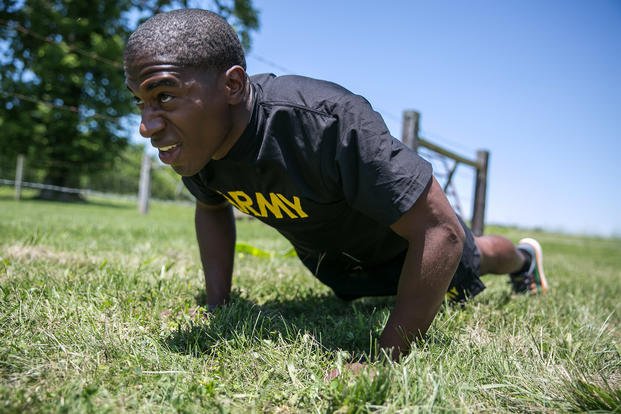Ever since I wrote "The Grinder PT-Key to Mental Toughness" eBook, I have noticed that the majority of people who attempt one of the toughest workouts I have created do quite well on push-up tests upon finishing. This eBook is modeled after the first month of SEAL training, where push-ups are done five days a week in the magnitude of several hundred a day. Improvement surprised me; I assumed the workout would border on overtraining.
This went against all the physiology I had studied in the past. What was meant to give SEAL candidates a taste of SEAL training on paper turned out to build muscle and increase push-up maximum scores. Typically, you give the body 48 hours of rest before doing similar resistance exercises or weight training, so the body has time to recover and grow stronger. That is why many workout routines offer upper-body exercises on Monday-Wednesday-Friday and lower-body exercises Tuesday-Thursday.
Related Video: Increase Your Pushups and Pullups - Quickly!
Some workouts even give up to 72 hours of rest before repeating the same exercises. But boot camp in every branch has used push-ups as a daily exercise, either in organized PT or punishment for not conforming to regulations. Throughout the years of experiencing military training either as a student or instructor, I noticed people were typically stronger in push-ups by the end of training.
So I started experimenting mostly with younger people from 18-30 years of age with similar goals of increasing their push-up scores on the PFT. The program is a 10-day plan that requires push-ups daily, but it still has some sound physiological rules that incorporate "some" rest but not much. Below is the program that has helped people go from 50 push-ups to 80 push-ups in two weeks.
On Odd Days
Do 200 push-ups in as few sets as possible in addition to your regularly scheduled workout of cardio exercises. You still can do upper-body workouts on these days if you are already on a program. This is a supplemental 200 push-ups using maximum repetition sets (4 x 50, 8 x 25 ... it's your choice how you get to 200).
On Even Days
Do 200 push-ups throughout the day. This can be little sets of 10 done every half-hour or 50 push-ups done four times throughout the day.
Rule
If your maximum is under 50 push-ups, do 200 a day. If your maximum is above 75, do 300 a day.
Repeat the odd/even routine for 10 days. Then take three days off and do no upper-body pushing exercises that work the chest, triceps and shoulders. Then on day 14, give yourself the push-up test (one or two minutes, depending on your physical fitness test). I would not recommend this workout more than once every six months, since it rather challenges on the same muscle groups repeatedly.
There are three main types of push-ups you can do to break up the monotony: "regular," "wide" and triceps pushups.
Stew Smith Pushups Demonstration
Stew Smith Wide Pushups Demonstration
Stew Smith Triceps Pushups Demonstration
The only difference in these three push-ups is the hand placement. Regular push-ups distribute your body weight proportionately between your chest, shoulders and triceps, whereas the wide push-ups will work the chest more, and the triceps or close push-ups will work the triceps and shoulders more.
If you are not on a program, you can try to add this with one of the free running programs to help your PFT running. See the "Running Plan for Marathons" article at Military.com.
Stew Smith is a former Navy SEAL and fitness author certified as a Strength and Conditioning Specialist (CSCS) with the National Strength and Conditioning Association. Visit his Fitness eBook store if you’re looking to start a workout program to create a healthy lifestyle. Send your fitness questions to stew@stewsmith.com.
Want to Learn More About Military Life?
Whether you're thinking of joining the military, looking for fitness and basic training tips, or keeping up with military life and benefits, Military.com has you covered. Subscribe to Military.com to have military news, updates and resources delivered directly to your inbox.



















